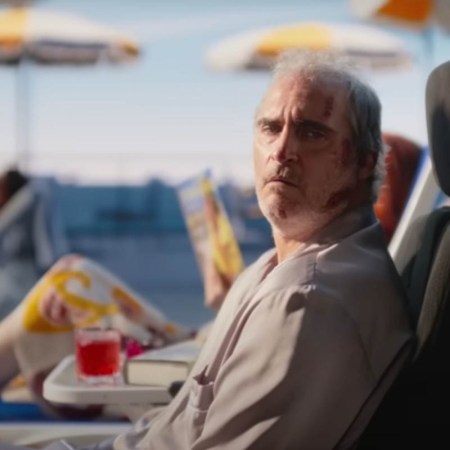
A Photographer’s Intimate Look at Burning Man
Dina Litovsky reveals what it’s like to capture the sand-soaked fever dream that takes place in the desert each year
For photographer Dina Litovsky shooting the annual Burning Man Festival was a real challenge — but probably not in the many ways you might imagine. “It gets very repetitive and it’s just really hard to put the experience into a photo” she tells InsideHook. Litovsky has attended the festival several times, but she’s also a photojournalist by trade — with work that’s appeared in places like National Geographic and The New York Times Magazine.

“At first I was very excited because in the first few years I thought everything was amazing. And then I was very much disappointed,” she says. For Litovsky, that repetitiveness of the annual festival presented a problem — and it was something that she sought to remedy. “There was a year when I really just put down my camera and almost didn’t take any pictures,” she said. Thankfully, that period of not documenting the festival didn’t last. Instead, Litovsky found a very specific angle on taking photos at Burning Man — and it’s something that’s led to a wide range of evocative images in the years that followed.

“I discovered whiteouts, which are the sandstorms there when everything just becomes completely white and you can’t see beyond a few feet,” she explained. “So I just started doing a series of whiteouts, and I’ve been doing that for the last five years on and off, depending on how the year was — just concentrating on photographing these sandstorms.”

In Litovsky’s images, the landscape of Black Rock City transforms into something deeply unfamiliar — one part Mad Max: Fury Road, one part Jodorowsky or Tarkovsky fever dream. Once you see Litovsky’s photos of the whiteouts, it becomes incredibly clear why she was drawn to these events — and even if you’ve never thought about traveling to the Nevada desert in late August, it makes the festival’s appeal that much more tangible.
For Litovsky herself, her work is also a way to break from the norms of Burning Man photography. “I think a lot of people go as participants and they end up photographing,” she said. “I don’t know anybody really going to [photograph]. I mean, I’ve seen images, but a lot of them are portraits of burners. And I feel like that has become the main images to come out of Burning Man over the years.”

That isn’t to say that Litovsky’s work documenting the festival is without its hazards. Or, to phrase things slightly differently, you can’t expect to bring a camera into a sandstorm without there being some side effects. Litovsky has written about the ups and downs of photographing Burning Man in her newsletter — including one installment dedicated to the technical challenges of the process. “My Nikon D2X was built like a tank so it survived, but by the end of its life it looked like it’d been through a world war and a zombie apocalypse,” she wrote.
In conversation, Litovsky went into more details about the festival’s effect on equipment. “I only have one system, so it’s always the same equipment,” she said. “I kill my equipment at Burning Man. I would get the same lens, just a new one. You know, it’s not the safest place for equipment. I just clean the camera afterwards and hope for the best.”

Given that Burning Man is an event that brings tens of thousands of people to the desert, much of the documentation of it has focused on its communal aspects. Litovsky’s photos of whiteouts take this narrative in a different direction.
“It’s a huge festival. I mean, it’s really huge. You can always find a place alone if you want to. And this is exactly what the whiteouts do,” Litovsky said. “They create the sense of being alone; they cover the sky, they cover the ground and you can’t see a person that’s two feet in front of you.”
The frequency of whiteouts can also vary dramatically from year to year. “There were some years where there were maybe two and then there were some years when it was all day and all night,” Litovsky explained.

Litvosky’s images of whiteouts at the festival have helped her to document an essential — and elusive — quality of Burning Man. “I think Burning Man is a very astounding and very surreal place,” she said. “I feel like a lot of photos don’t do it justice because of the fact that they’re focusing on a small aspect of it. I was trying to find a way to photograph Burning Man that was not just original, but that could express the necessity of it, and how it’s a very surreal space.”
For Litovsky, pushing back against cliched images has made for mesmerizing, immersive work. “I gave up on photographing the partying, which I tried the first couple of years,” she recalled. “Now, I just focus on photographing the silence of Burning Man.” Gazing upon her work, one thing is for sure: these pictures speak volumes.
Thanks for reading InsideHook.
Sign up for our daily newsletter to get more stories just like this.



